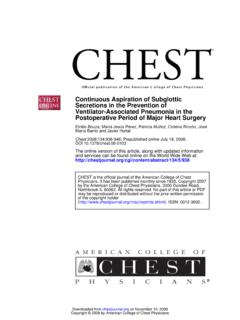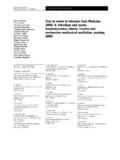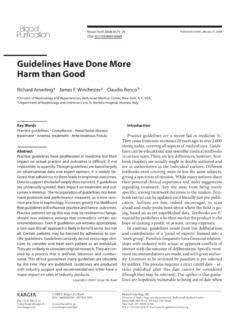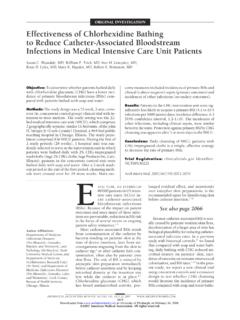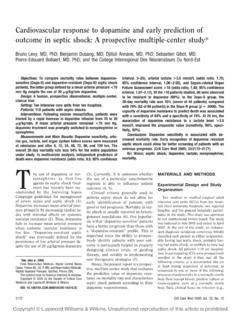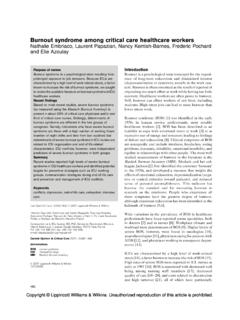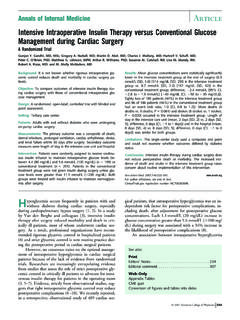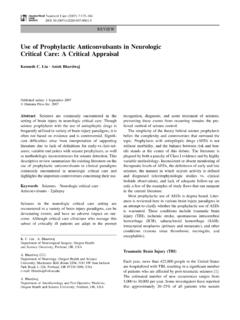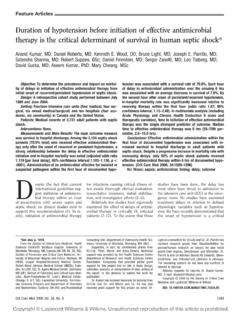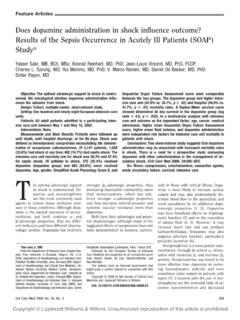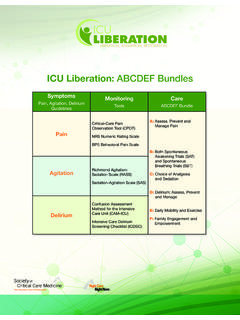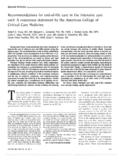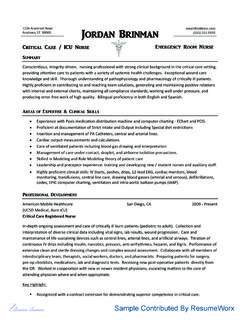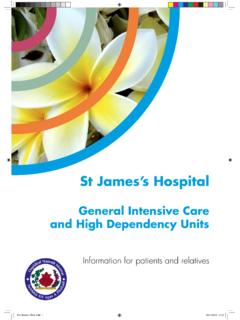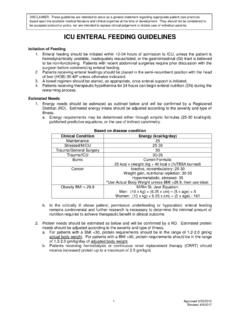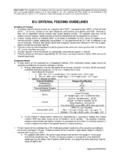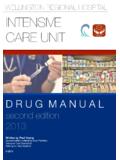Transcription of A New Era for Sedation in ICU Patients - ccmpitt.com
1 Current as of February 5, 2009. Online article and related content . 2009;301(5):542-544 ( ) JAMA Hannah Wunsch; John P. Kress A New Era for Sedation in ICU Patients Correction Contact me if this article is corrected. Citations Contact me when this article is cited. Topic collections Contact me when new articles are published in these topic Care; Psychiatry; Delirium; Prognosis/ Outcomes; Drug Therapy; Drug Therapy, Neurology; Neurology, Other; Critical Care/ Intensive Care Medicine; Adult Critical the same issueRelated Articles published in.
2 2009;301(5) R. Riker et al. Randomized TrialDexmedetomidine vs Midazolam for Sedation of Critically Ill Patients : A Alerts at University of Pittsburgh on February 5, 2009 from EDITORIALE ditorials represent the opinionsof the authors andJAMA andnot those of the American Medical New Era for Sedation in ICU PatientsHannah Wunsch, MD, MScJohn P. Kress, MDCRITICALLY ILL Patients FREQUENTLY REQUIRE IN-vasive monitoring and other support that can leadto anxiety, agitation, and of Sedation isessential for the comfort and safety of these pa-tients.
3 Options for Sedation in the intensive care unit (ICU)are limited, with benzodiazepines and propofol the most com-mon ,3In the past, these agents were generally usedto keep Patients motionless and to reduce memory of theirexperience in the ICU. However, recognition that heavy se-dation may increase mortality and morbidity has led to anew model in which the emphasis is on maximizing the com-fort of these Patients while they remain interactive, ori-ented, and able to follow new model re-lies on strategies such as daily interruptions of Sedation ,5use of scores such as the Richmond Agitation- Sedation Scaleto maintain target Sedation level.
4 6and minimizing the useof paralytic important consequence of lighter Sedation is thatphysicians and critical care staff can now routinely assessthe cognitive function of critically ill Patients . Recent stud-ies suggest that delirium is a common complication ofbeing in the ICU that is often diagnosed only throughactive assessment by clinicians and that may be present inpatients who, when observed from the foot of the bed,look calm and , delirium isindependently associated with cognitive impairment athospital discharge and with 6-month , the Sedation agents, particularly benzodiazepines,are potential causes of delirium,10prompting the questionof whether other sedative agents may represent a relatively new drug.
5 Dexmedetomidine, has shownpromise as a sedative agent for ICU Patients and maydecrease the occurrence of a combined end point ofdelirium or is an 2receptoragonist and close relative of clonidine that works viareceptors distinct from the -aminobutyric acid receptorfor benzodiazepines and propofol. As a sedative, dexme-detomidine is notable for its lack of suppression of the res-piratory drive and for its potential to provide some analge-sia and ,13 For these reasons, this agent ispotentially useful for Sedation of critically ill , for the past 8 years, dexmedetomidine has beenapproved by the US Food and Drug Administration onlyfor use up to 24 hours in mechanically ventilated Patients ,at a dose no higher than g/kg per hour, limiting itsuse for Sedation of ICU this issue ofJAMA.
6 Riker and colleagues14provide datato support the idea that the development of delirium maybe modifiable by choice of sedative by comparing dexme-detomidine and midazolam infusions in mechanically ven-tilated Patients . The authors received permission to use dosesof dexmedetomidine up to twice the limit approved by theFood and Drug Administration, and for up to 30 days of me-chanical ventilation, with the dual goal of assessing the safetyand efficacy of the extended dosing regimen. This large,double-blind, randomized controlled trial showed a de-crease in the rate of delirium in critically ill Patients se-dated with dexmedetomidine compared with midazolamand a concomitant decrease in the time to extubation.
7 Butperhaps most important, this study, in conjunction with arecently published trial by Pandharipande et al,11helps toestablish dexmedetomidine as a safe alternative to benzo-diazepines for long-term Sedation of critically ill evaluations of the safety of dexmedetomidine, thesestudies are complimentary. The trial by Pandharipande etal11involved Patients from only 2 centers but was able toprovide follow-up information on Patients after dischargefrom the hospital. Pandharipande et al found a decrease ina combined end point of days alive without delirium or comausing dexmedetomidine vs lorazepam.
8 The trial by Riker etal14included Patients from a much larger mix of ICUs inmultiple countries. The trade-off in this study was more lim-ited follow-up, likely owing to the logistical challenge of datacollection in a multicenter setting. Taken together, these stud-ies shift dexmedetomidine from a sedative suitable for theoccasional patient to one useful for a majority of criticallyill also p Affiliations:Department of Anesthesiology, Columbia University, New York,New York (Dr Wunsch); Department of Medicine, University of Chicago, Chi-cago, Illinois (Dr Kress).
9 Corresponding Author:John P. Kress, MD, Department of Medicine, Universityof Chicago, 5841 S Maryland Ave, MC 6026, Chicago, IL 60637 4, 2009 Vol 301, No. 5(Reprinted) 2009 American Medical Association. All rights reserved. at University of Pittsburgh on February 5, 2009 from A notable aspect of the design of the study by Riker etal14was the emphasis on keeping Patients lightly sedatedthroughout the study period, focusing attention on the ideathat heavy Sedation is not often needed, even for patientsrequiring mechanical ventilation for longer than 3 days.
10 Thetarget Richmond Agitation- Sedation Scale score ranged from 2 (light Sedation ) to 1 (restless) at all times. In fact, thetime Patients spent within this target range represented theprimary outcome for the study. The authors were unableto prove their primary hypothesis, which was that patientssedated with dexmedetomidine would be in the target se-dation range longer than those sedated with midazolam. Butboth groups were maintained in the appropriate light seda-tion range for an encouraging 75% of the study by Riker et al14also illustrates a number of de-sign challenges for trials of Sedation practice.
